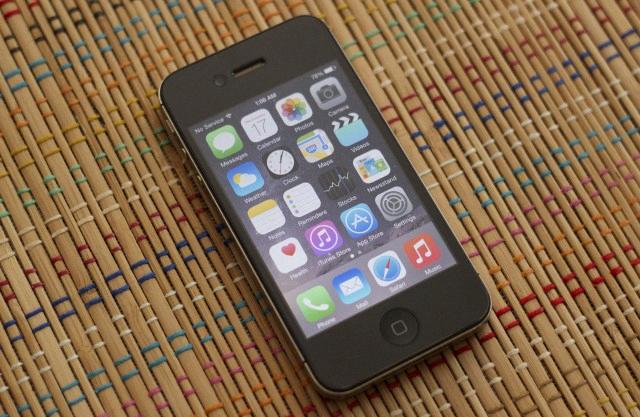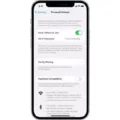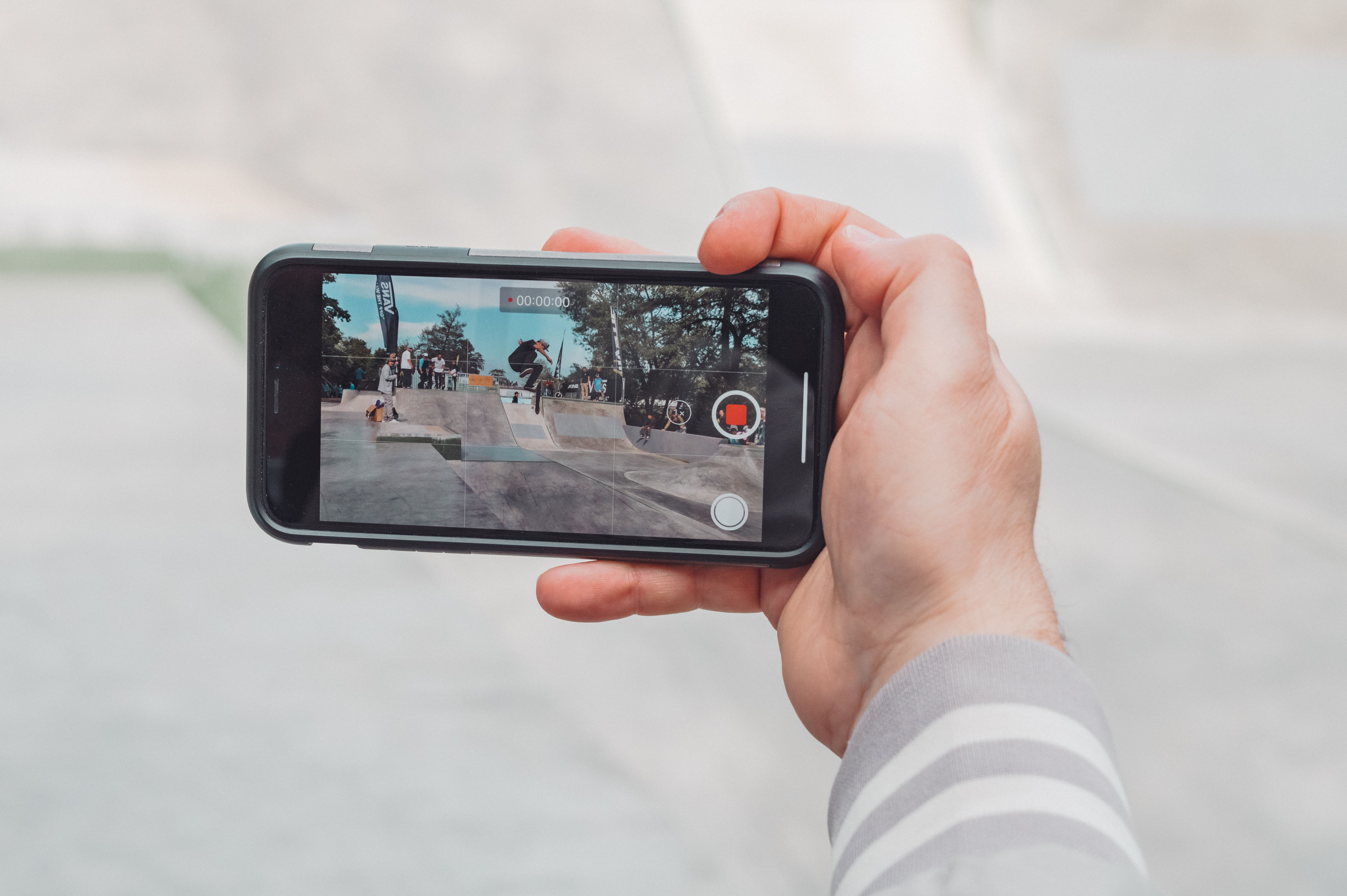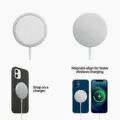The iPhone 4s, released in 2011, was a popular device known for its innovative features and sleek design. However, over time, you may notice that your iPhone 4s is not performing as smoothly as it used to. Don’t worry, there are several steps you can take to improve its performance and make it run more efficiently.
One common issue that can slow down your iPhone 4s is limited storage space. As you use your device, it accumulates various files, apps, and data, eventually filling up the available storage. This can lead to sluggish performance and delays in app loading times. To address this, you can start by checking your storage space and deleting any unnecessary files, photos, or apps that you no longer use. This will free up space and allow your iPhone 4s to run more smoothly.
Another factor that can affect the performance of your iPhone 4s is the battery health. Over time, the battery capacity of your device may decrease, resulting in shorter battery life and slower performance. To check the battery health of your iPhone 4s, go to Settings > Battery > Battery Health. If the battery health is below 80%, it may be a good idea to replace the battery to improve performance and extend battery life.
Updating your software is also essential for optimizing the performance of your iPhone 4s. Apple regularly releases software updates that include bug fixes, security enhancements, and performance improvements. To update your iPhone 4s, go to Settings > General > Software Update, and if there is an available update, follow the on-screen instructions to install it. Updating your software will ensure that your device runs on the latest version, which can help improve performance.
In addition to updating your software, it’s important to keep your apps up to date as well. App developers often release updates to address bugs and improve performance. To update your apps, open the App Store, go to the Updates tab, and tap on Update All to update all your apps at once. Keeping your apps updated will ensure that they are running smoothly and efficiently on your iPhone 4s.
Lastly, it’s important to consider your network conditions when experiencing slow performance on your iPhone 4s. Some apps require a stable internet connection to function properly. If you are experiencing slow internet speeds or connectivity issues, try switching to a different Wi-Fi network or restarting your router. This can help improve the overall performance of your iPhone 4s when using internet-dependent apps.
By following these steps, you can optimize the performance of your iPhone 4s and enjoy a smoother and more efficient user experience. Remember to regularly check your storage space, battery health, update your software and apps, and consider your network conditions to ensure that your device is running at its best.
Why Is My IPhone 4 So Slow?
There are several reasons why your iPhone 4 may be running slow:
1. Limited processing power: The iPhone 4 was released in 2010, which means it has a much slower processor compared to newer models. As technology advances, apps and software become more demanding, causing older devices to struggle to keep up.
2. Outdated software: If you haven’t updated your iPhone 4 to the latest iOS version, it can lead to performance issues. Newer software updates often include optimizations and bug fixes that can improve overall speed and efficiency.
3. Insufficient storage: The iPhone 4 has limited storage capacity, and if it’s filled up with apps, photos, videos, and other files, it can slow down the device. When storage space is low, the iPhone has less room to operate efficiently.
4. Battery degradation: Over time, the battery in your iPhone 4 may lose its capacity to hold a charge, resulting in slower performance. If your battery health is below optimal levels, it can impact the device’s speed and responsiveness.
5. Background processes and apps: Running multiple apps in the background can consume system resources and slow down your iPhone 4. Closing unnecessary apps and limiting background processes can help improve performance.
6. Cache and junk files: Accumulated cache and junk files can also contribute to a slow iPhone. These files take up valuable storage space and can impact system performance. Clearing cache and deleting unnecessary files can help speed up your device.
7. Hardware limitations: The iPhone 4’s hardware is simply not as powerful as newer models. As apps and software become more advanced, they may not run as smoothly on older devices like the iPhone 4.
To improve the performance of your iPhone 4, you can try the following solutions:
– Update to the latest iOS version available for your device.
– Free up storage space by deleting unnecessary apps, photos, and files.
– Close background apps and limit background processes.
– Clear cache and junk files regularly.
– Restart your iPhone 4 to refresh the system.
– Consider replacing the battery if it’s significantly degraded.
– If all else fails, it may be time to consider upgrading to a newer iPhone model with better performance capabilities.
Remember, as technology advances, older devices like the iPhone 4 may struggle to keep up with the demands of modern apps and software.

How Can I Improve My Old IPhone Performance?
To improve the performance of your old iPhone, here are some steps you can take:
1. Check your network conditions: Ensure that you have a stable internet connection as many apps require it for their content and functionality.
2. Close unresponsive apps: If an app is not responding or running slowly, close it by double-clicking the home button (for iPhones with a home button) or swiping up from the bottom of the screen (for iPhones without a home button) and then swiping the app off the screen.
3. Free up storage space: Make sure you have enough storage available on your device. Delete unnecessary apps, photos, videos, and files that you no longer need. You can also offload unused apps or use cloud storage options to store your files.
4. Turn off Low Power Mode: If your iPhone is in Low Power Mode, it may limit certain features and background activities to conserve battery life. To turn it off, go to Settings > Battery > Low Power Mode and toggle it off.
5. Maintain optimal temperature: Extreme temperatures can affect the performance of your device. Avoid exposing your iPhone to excessive heat or cold, as it can cause it to slow down or malfunction. Keep it in a moderate temperature range.
6. Check battery health: The health of your iPhone’s battery can impact its performance. Go to Settings > Battery > Battery Health to check the maximum capacity of your battery. If it is significantly degraded, you may consider getting the battery replaced.
By following these steps, you can help improve the performance of your old iPhone and ensure a smoother user experience.
What Is The Highest IOS Update For IPhone 4s?
The highest iOS update available for the iPhone 4s is iOS 9. The iPhone 4s was the first iPhone model to support five major versions of iOS, starting from iOS 5 and going up to iOS 9. It is worth noting that the iPad 2 also supported iOS updates from iOS 4 to iOS 9. Here is a breakdown of the iOS versions supported by the iPhone 4s:
1. iOS 5: The iPhone 4s was initially released with iOS 5, which introduced several new features such as iMessage, Notification Center, and iCloud integration.
2. iOS 6: The iPhone 4s was compatible with iOS 6, which brought improvements to Siri, FaceTime over cellular, and added features like Passbook and Apple Maps.
3. iOS 7: The iPhone 4s received the iOS 7 update, which introduced a complete redesign of the user interface, Control Center, AirDrop, and improved multitasking capabilities.
4. iOS 8: The iPhone 4s was able to run iOS 8, which brought enhancements to the Messages app, a new Health app, and improved integration with iCloud Drive.
5. iOS 9: The iPhone 4s’s final iOS update was iOS 9. This update focused on performance improvements, enhanced Siri functionality, and introduced features like Proactive Assistant and a new News app.
It’s important to note that the iPhone 4s does not support any iOS updates beyond iOS 9. This means that newer features and security updates introduced in later iOS versions are not available for the iPhone 4s.
Conclusion
The performance of the iPhone 4s may be affected by various factors. One of the main reasons for its slow performance could be the lack of storage space, as this device has a limited capacity compared to newer models. It is important to regularly check and manage the storage on the iPhone 4s to ensure optimal performance.
Additionally, the battery health of the iPhone 4s may also contribute to its slow performance. Over time, the battery capacity decreases, resulting in shorter battery life and potentially slower overall performance. Monitoring the battery health and replacing it if necessary can help improve the performance of the iPhone 4s.
Furthermore, using outdated apps and software versions can also impact the performance of the iPhone 4s. As technology advances, apps and software are optimized for newer devices, leaving older models like the iPhone 4s behind. Keeping the apps and software updated to their latest versions can help improve the performance and compatibility of the iPhone 4s.
It is worth mentioning that the iPhone 4s was released several years ago and is no longer supported by the latest iOS updates. This means that it may not be able to take advantage of the latest features and optimizations available in newer iOS versions. However, for users who still have the iPhone 4s, following the aforementioned tips can help maximize its performance and usability.







